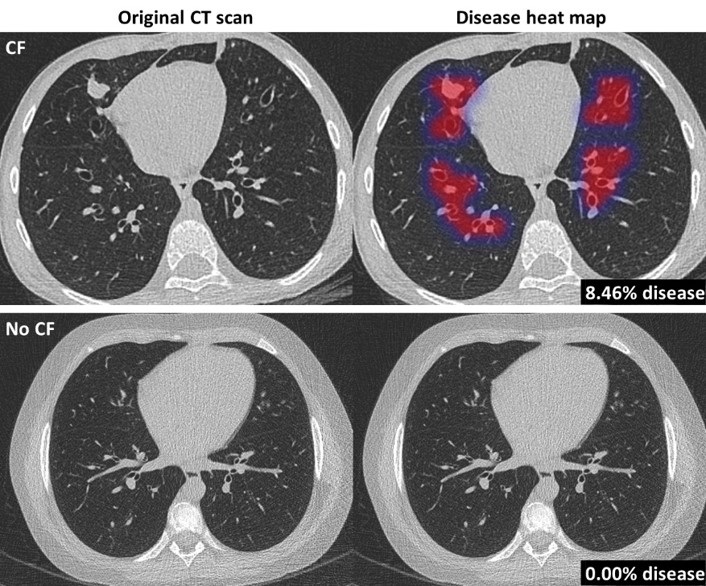An AI algorithm, created by Thirona, is set to pave the way for revolutionary Cystic Fibrosis (CF) care. Quadrant Health sits down with Product Manager Jean-Paul Charbonnier to discuss how PRAGMA-AI works and how it improves diagnostic capabilities.

Thirona develops AI algorithms to analyse medical images to help with CF diagnosis. Their project focuses on lung CT scans and how they can detect CF in the lung. It will also quantify lung abnormalities that occur from CF.
Cystic Fibrosis is an inherited condition that affects around 70,000 people globally. It impacts the lungs, and the digestive system and symptoms usually occur in early childhood that gradually gets worse over time. CT scans are used to help identify whether someone has cystic fibrosis.
CT scans identify a lot of abnormalities, but humans are unable to quantify all the information, explained Jean-Paul.
He added, “This is the reasoning for us to move into this field [previously COPD and asthma]. It is a niche market, but it is a very interesting and relevant topic to explore. AI computer methods will help in quantifying CF medical images.”
Without PRAGMA-AI radiologists and radiographers can only say whether there is more disease or less disease. However, with the use of the AI algorithms they can identify 25% of the lung is affected with highly accurate quantification.
It is a niche market, but it is a very interesting and relevant topic to explore. AI computer methods will help in quantifying CF medical images
The quantification of CF came from Thirona’s partners in a separate project. Jean-Paul told Quadrant Health: “Our partners have developed a scoring scheme. They were then able to divide the lungs into chunks and divide those chunks into blocks. These blocks are then classified and scored by the analyst.”
This was a huge step for in-depth medical imaging. Despite this, for Radiologists, analysing these images is very time-consuming. Thirona produced AI algorithms to make medical imaging analysis quicker.
Jean-Paul explained, “We developed this AI-based algorithm that does it [quantifying the image] automatically. It takes in the scan; it quantifies the same abnormal regions that the human will do and will give back the percentage in a few seconds instead of an hour of manual labour.”
What does integration of AI mean for medical practice?
AI can be used in many ways in the medical field. Radiography is an interesting and relevant field and AI is slowly starting to aid the quality of imaging and speed of diagnosis.
Quadrant Health was told, “It also leads to a better and precise diagnosis. It can help with abnormalities that are visually not clear to the naked eye. The computer algorithm can already say there is something going on here and the radiographer can take a closer look.
Different variations of CF require different treatments to manage the symptoms. More detailed imaging of the lungs can lead to better care and more effective care, as radiographers can highlight more distinct characteristics of CF.
Here to help not take over
Jean-Paul explained that the field is becoming more accepting of AI as it is integrated into healthcare more and more. “There was a lot of pushback from the field because initially, radiographers thought it was going to change or steal their job,” he said.
“We actually think we give them their jobs back by aiding them with the mundane and time-consuming jobs. They can focus on other aspects of their jobs such as patient care,” added Jean-Paul.
We actually think we give them their jobs back by aiding them with the mundane and time-consuming jobs
There are two things Thirona considers when they develop their AI algorithm. The first consideration is whether the development is clinically relevant. If they put it into the clinic, is it going to change anything or is it just nice to have? Secondly, is it going to change patient management?
While AI remains a controversial topic both legally and ethically, it is clear to see the power that artificial intelligence has in enhancing medical imaging.

